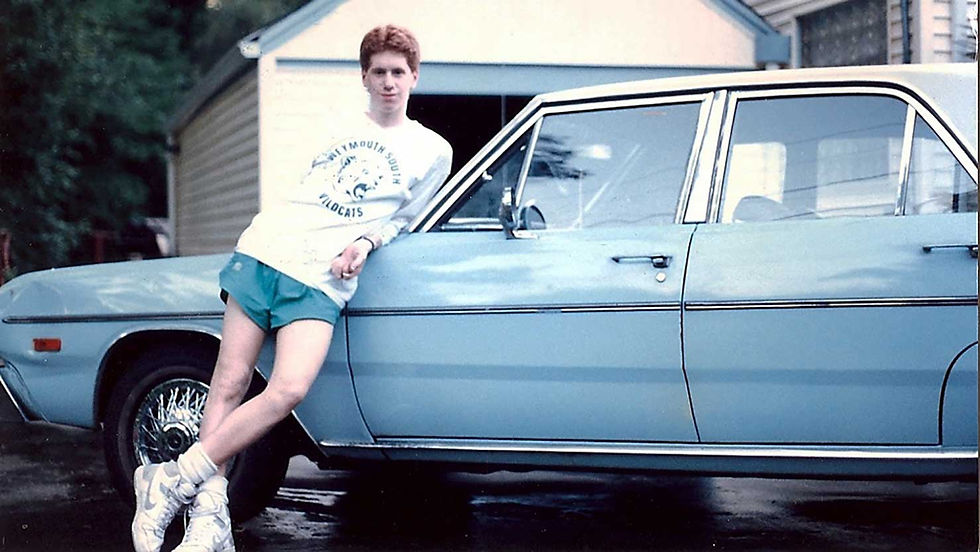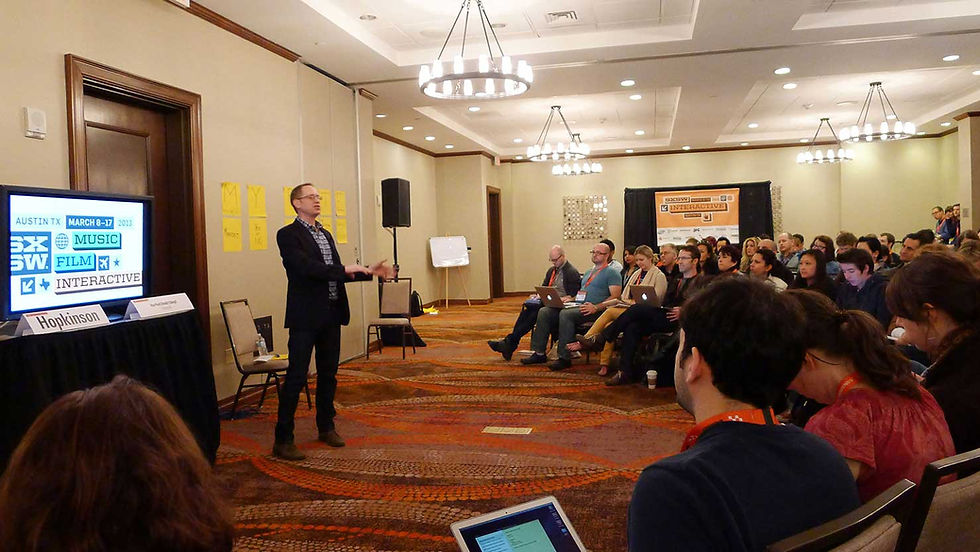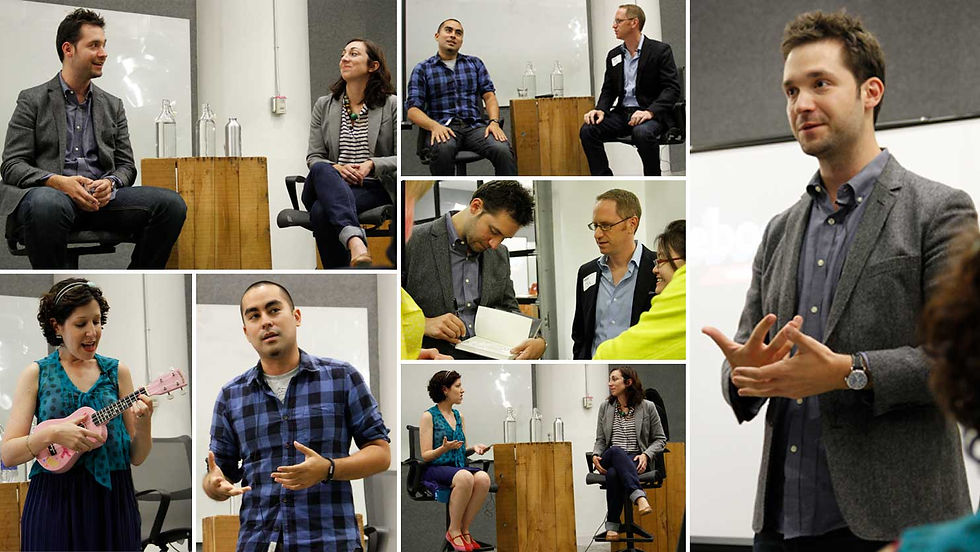Speaking
- Jim Hopkinson
- Apr 3, 2019
- 8 min read
Updated: Jun 2, 2019
“There are always three speeches, for every one you actually gave. The one you practiced, the one you gave, and the one you wish you gave.”

Top 10 Lessons Learned From More Than 50 Speeches
You see references to it in just about every job opening on the planet:
"Excellent written and verbal communication skills required"
"Must be an excellent communicator with great interpersonal and presentation skills aimed at senior executives, subject matter experts, and the layperson"
"Ability to use humor, creativity, and energy to maintain team momentum"
"Capability to communicate confidently, concisely, and clearly"
There's no doubt that communication skills are in high demand. Here's why:
Great speaking skills are a force multiplier
What I mean by that is that honing great speaking skills doesn't just mean doing the same "stand in front of a crowd" speech on the same topic 50 times. Oh no.
Getting comfortable in ONE speaking format allows you to morph your skills into ALL speaking formats. From conference talks to giving a dinner party toast, these things matter.
Here are 10 lessons learned from a variety of speaking opportunities:
1. The Scary Speech: Face your fears

Let's put this out there first: The nervousness of speaking before a crowd never truly goes away. For many, it can be terrifying. The solution?
Step 1: Start Small
I didn't start out by doing keynotes and conferences. In fact, my first "speeches" involved bribing friends with free food and begging them to listen to my presentation. But it was low stakes and it built confidence.
Step 2: Relentless practice and preparation
At least for me, knowing the material down cold and running through the speech multiple times (with a timer, so you don't go over time) is the key to success.
Sure, some people can "just go up there and wing it," but even then I've found that those people still have had extensive practice winging it.
The story that most exemplifies this for me was a best man speech I gave for my friend John.
2. The Wedding Toast: Apply the rule of 5s

I considered it an honor to be asked to do this, and there was no way I was going to let my friends down. My process became a rule of 5:
I started ruminating about 5 weeks ahead of time, and slowly gathered ideas on what made the couple unique; remember, it's about them
Do not start thinking about the speech 5 minutes beforehand
Include these 5 elements: How you know them, thanks to their families, a (clean) joke, a moment that makes the audience go "awwwww," and a closing quote/toast
Write it out longhand in about 5 paragraphs; practice
Narrow it further to 5 sentences you can remember; practice
Get it down to 5 words you can reference; practice
Make sure the whole toast is under 5 minutes
Walk out there with confidence and make it look natural
The best compliment of the night? A family member rushed up to me and said:
"Oh my gosh that was the best wedding speech I've ever heard in my life! Did you just make that up on the fly?"
I smiled, thanked him, and simply said "Yeah, something like that."
3. Conference Host: Prepare for the worst (and skip the meatballs)

Want more evidence that preparation is king?
I co-hosted a conference called Reboot Workshop with my friend Nate Cooper a few years back. We had sold out the event space and had 100 excited attendees. We had 6 guest speakers and breakout sessions. We had prepared for weeks.
Then we had a speaker dinner with pizza the night before the event, and I had a slice with meatballs. As I walked home that night my stomach started rumbling. In a bad way. I popped a few Tums, went to bed, and then ...
I woke up an hour later with violent food poisoning.
It lasted the entire night and I kept staring at the clock, knowing I was the first speaker at 8am sharp. Somehow, I managed to show up, but it wasn't pretty. I had less than 2 hours of sleep. I was dehydrated. I was nauseous. I was dizzy. I dropped 9 pounds. At one point I lost partial hearing.
And my speech? I nailed it.
How? I had prepared for that moment so many times, my body simply went on autopilot. I delivered the speech, stayed as long as possible, then slept for about 18 hours.
4. Live Studio: Work on your soundbites, and hope for a good host

During my book promotion, my PR person got me a spot on a live Yahoo Finance segment. Although I knew my subject matter down pat, this was a rare instance where the host introduced me, set up the topic, and the first time he threw it over to me ...
I completely froze.
I embarrassingly stammered and stuttered until I got out one of my taglines from the back of my brain, but I was not off to a good start.
Fortunately, the host was a complete pro. He saw what happened, took back control, and talked for a minute or so to let my nerves die down and set me up for the next question.
Fortunately, I took the next one in stride and we were off to the races. I think we were both pretty relieved.
Lesson Learned: A live "studio style" interview is a completely different beast, requiring a different kind of speaking style filled with tight soundbites. Practice for this style and get specific media training if necessary.
5. Apathetic Audiences: Self-deprecation, video, and interaction

While it's amazing when an audience is eager to hear what you have to say, there will be times when they're a bit apathetic.
I've especially seen this at speeches and guest lectures at several colleges, where students can be a hard crowd to win over. Here are three tips:
Use self-deprecating humor. It's important to show that you're not trying to be better than the audience, and that you were once in their shoes. Nothing says that better than a dorky high school photo. The one above works for me. Every. Time.
Show videos. Nothing perks up an audience from their post-lunch energy dip than the words "now I'm going to show you a funny video."
Interaction. An interactive presentation where the audience actually does something will always lead to better retention; simply doing "turn and introduce yourself to the person next to you" is a great way to get the room buzzing
6. Conference Panel: Get some all-stars, then know your lane

Not ready for a high pressure solo presentation? Being a member of a panel is an awesome way to get exposure without being the center of attention. The key is having a diverse group that works well together, then "staying in your lane."
The group above clicked immediately, found that mojo, and took the success from a single panel at SXSW Austin and turned that into an invite the following year, appearances at SXSW Vegas, and conferences in NYC. Once you have the right people, you can apply the formula to any number of topics. Here was our lineup:
Helen Todd: A curious learner and natural connector, Helen sought out great conferences, brainstormed topics, brought together key people, and facilitated our panels.
Jim Hopkinson: My role was the "analytical, deep-dive" source, delivering well-researched facts and figures to the topic at hand with boundless energy.
Jey Van-Sharp: A business consultant at the convergence of fashion, music, and art, Jey is a big, genuine, exuberant personality with something to say.
Adam Marelli: By contrast, Adam is a low-key, introverted artist. But when his turn on the mic arrives, his quiet confidence and gripping stories keep every audience member locked in on the edge of their seats.
6. Core Conversation: Start, then get out of the way

After preparing dozens of solo presentations and panels, I got accepted to give a "Core Conversation" at SXSW. Three lessons learned:
Step outside your comfort zone. This format was a new challenge for me and a bit scary, but it definitely helped me grow as a presenter.
Set the stage, then get out of the way. I set the stage in the first 10 minutes with a joke, introductions, and an overview of the topic to put people at ease, then shut my mouth and facilitated the remaining 50 minutes and let the audience run the show.
Improv in the moment. While preparation is key, I learned to think on my feet. With 10 minutes to go before the speech, crucial flip charts had not yet arrived. I sprinted to the Expo floor and grabbed a stack of free "Big Post-It Notes" from the 3M booth and used those instead (see the wall behind me).
7. Conference Series: Unique speakers, unique format

Have a pretty unique way you'd like to see a conference run? Host one!
That's what Nate Cooper and I did with our third Reboot Conference series. To my knowledge, I've never seen a similar format to this:
Hosts (Jim and Nate) kick off the evening with short personal speeches
Speaker A gives a solo presentation, then is interviewed by Speaker B
Speaker B gives their solo presentation, then is interviewed by Speaker C
Networking break, book signing, drinks
Speaker C presents -- with a Ukelele! -- then is interviewed by Speaker D
Speaker D presents, then is interviewed by the Host
More networking and a video recap
Of course, the unique format is helped by a group of diverse, unique speakers:
Alexis Ohanian, Co-founder of Reddit and author of Without Their Permission
Jessica Lawrence, Director of NY Tech Meetup (largest Meetup in the world)
Michelle Ward, Creative Career Coach
Cesar Kuriyama, TED Speaker, inventor of One Second Every Day app
8. Live Event: People love free stuff (so do sponsors)

You say it's difficult to hold an audience's attention? I have a cure for that!
Partner a targeted audience with a sponsor willing to reach them with free swag, and suddenly you're the most popular guy in the room. Examples:
Handing out Reddit bobbleheads, WIRED magazines, and t-shirts here
Giving away engraved WIRED iPods at SXSW and Starbucks Coffee (above)
Raffling off Starbucks gift cards and Griffin electronics
9. Conference Hijacking: Don't be afraid to go rogue (it might land you a job)

Once again, if there's a topic you want to know about but no one is talking about it, take control and host an event yourself!
That's just what happened at the "World Domination Summit" entrepreneur conference in Portland in 2015. They encouraged attendees to run their own meetups between sessions, so I went rogue and commandeered the sunny patio at my hotel to talk about online courses. The result?
A great discussion with a lot of (sunburned) guests
Some uneasy glances from the hotel staff (until people started buying lots of food)
A woman named Megan Dougherty was there (captured in this random photo), we got to talking, another conversations ensued with her CEO, and I ended up working at her company Mirasee for 3 1/2 years.
You never know what will happen if you just put yourself out there.
10. Live Hotseat: They don't know you're as nervous as they are

Another opportunity to step outside my comfort zone arose when friend and conference host Sean Blanda asked me to conduct a live "Hot Seat" presentation at the Adobe / 99U "Pop Up School" in New York City.
In this scenario, I taught a few salary negotiation tips to the attendees, and then they signed up to do a totally live "hot seat" session, with me serving as the HR representative and them as the job seeker.
It was a unique "double blind" experiment, where I chose a random salary range and decided on an arbitrary max that I wanted to pay, and they had their own numbers in mind, but neither of us knew each other's goals.
As much as the attendees were nervous to get up in front of the group, little did they know I was equally as nervous. But the exercise went off without a hitch.
Key Takeaways

As I see it, there are really only two goals for a compelling presentation:
Entertain and Inform.
If an audience member is entertained but doesn’t learn anything, they walk away with a smile on their face, but without a transfer of knowledge or call to action.
If a speaker seeks only to inform, they lack engagement with the audience in a meaningful way and risk boredom overshadowing a learning opportunity.
To pull that off successfully requires facing your fears and putting yourself outside your comfort zone, then practicing relentlessly to hone your craft.
If you do this, you'll have a skill that is in demand and will help you in every phase of your career and life.



Comments